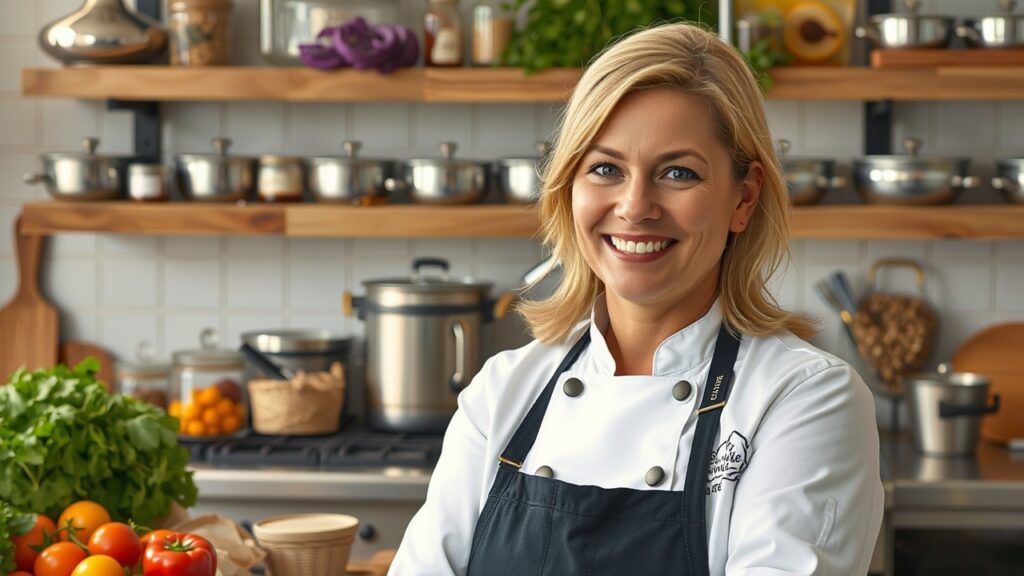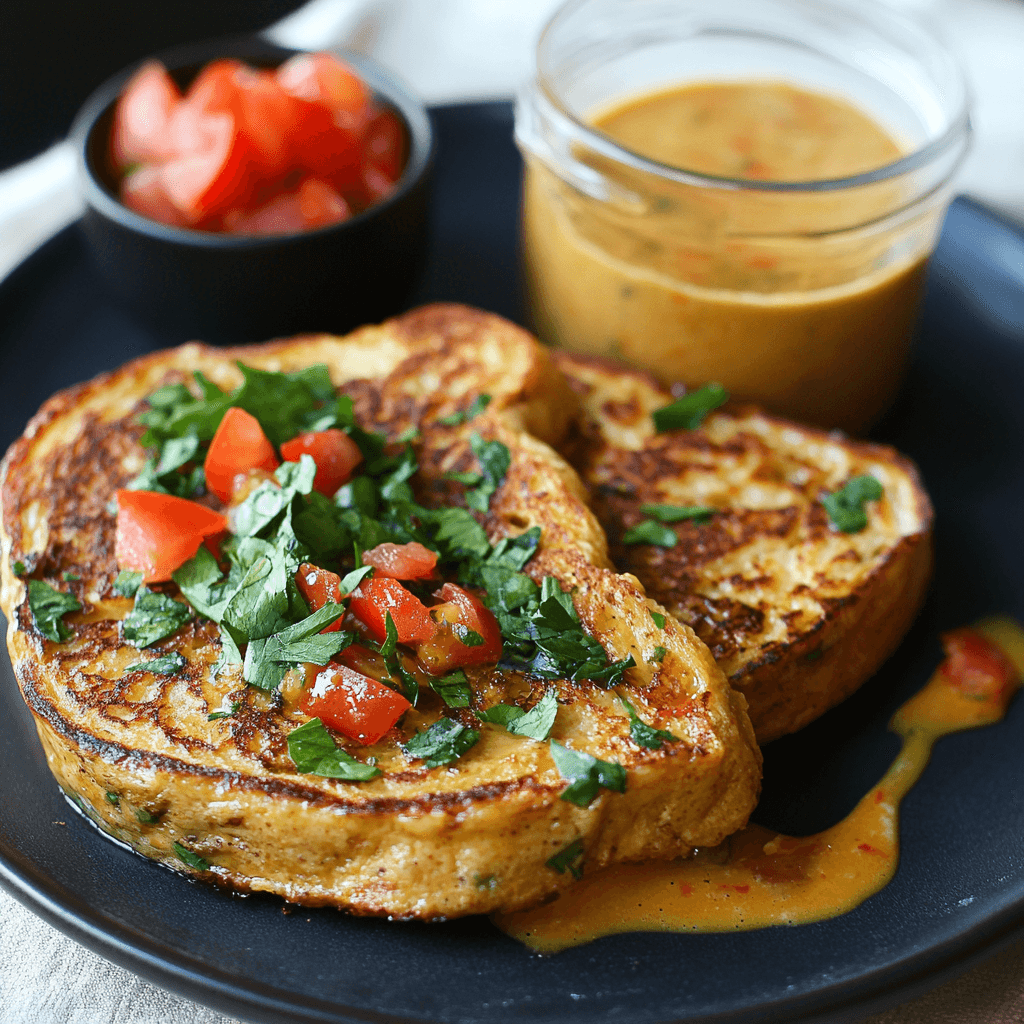Introduction to French Toast for One
What Makes French Toast a Classic Breakfast?
French toast has long been a beloved breakfast choice worldwide. Its appeal lies in its simplicity, versatility, and delicious taste. By transforming basic ingredients like bread, eggs, and milk into a golden, custardy delight, French toast offers comfort with every bite. Whether enjoyed sweet or savory, its soft center and crisp edges make it a timeless favorite.
French toast is also wonderfully adaptable—topped with fresh fruits, syrup, powdered sugar, or even a dollop of whipped cream, it can easily cater to individual preferences. This ability to balance elegance with ease makes it a breakfast classic loved by all.
Why Choose a Single-Serving French Toast Recipe?
Perfect for Quick, Solo Meals
Cooking for one doesn’t have to be boring or time-consuming. A single-serving French toast recipe is ideal when you want a satisfying meal without leftovers. It’s quick to prepare, requiring minimal effort and a few pantry staples. Plus, it’s perfect for busy mornings, lazy weekends, or when you simply crave something warm and comforting.
Benefits of Cooking for One
Cooking for one allows you to:
- Save Time and Ingredients – No need to waste food or prep large portions. A single-serving recipe uses only what you need.
- Customize to Your Taste – You can easily adjust sweetness, toppings, or spices to match your cravings.
- Practice Self-Care – Treating yourself to a thoughtfully prepared meal, even something as simple as French toast, can be a rewarding act of self-care.
- Minimize Cleanup – Fewer dishes mean less mess and cleanup, so you can focus on enjoying your meal.
Whether you’re cooking for yourself out of necessity or choice, this single-serving French toast recipe ensures you still enjoy a delicious, comforting breakfast made just for you.
Key Ingredients for a Perfect French Toast Recipe for 1
Bread: Choosing the Right Type
The choice of bread is crucial to achieving the perfect French toast texture. Different types of bread bring distinct qualities to the dish:
- Brioche: Rich, buttery, and soft, brioche is the gold standard for French toast. Its delicate crumb soaks up the egg mixture perfectly without falling apart.
- White Bread: A classic and affordable option, white bread provides a neutral base that works well for quick meals.
- Challah: Similar to brioche, challah has a slightly sweet flavor and firm texture, making it an excellent choice for French toast.
- Stale Bread: Slightly stale bread (1–2 days old) works best as it absorbs the mixture without getting too soggy.
The key is to choose thick-cut slices that are sturdy enough to hold up during dipping and cooking.
Essential Ingredients: Milk, Eggs, Sugar, and Flavorings
To make a perfect single-serving French toast, you’ll need:
- Egg: Acts as the base for the custard, providing structure and richness.
- Milk: Adds creaminess. Whole milk works best, but you can use alternatives like almond or oat milk.
- Sugar: A small amount of sugar sweetens the custard mixture. Adjust based on your preference.
- Flavorings:
- Vanilla extract for a hint of sweetness.
- Cinnamon for warmth and depth of flavor.
- A pinch of salt to balance the sweetness.
Optional Toppings to Elevate Your Toast
Take your French toast to the next level with creative toppings:
- Sweet Options:
- Maple syrup or honey
- Powdered sugar
- Fresh fruits like strawberries, blueberries, or bananas
- Whipped cream
- Nut butter or chocolate spread
- Savory Twist: Add a sprinkle of cheese, bacon, or a drizzle of hot honey for a unique flavor.
Step-by-Step Instructions for a Single-Serving French Toast
Preparing Your Ingredients
- Gather all the ingredients: bread, egg, milk, sugar, vanilla, cinnamon, and salt.
- Slice your bread if needed, ensuring it’s thick enough to hold the custard without falling apart.
Mixing the Perfect Egg-Milk Mixture
- In a shallow bowl or dish, whisk together:
- 1 large egg
- 2–3 tablespoons of milk (adjust for creaminess)
- ½ teaspoon of sugar
- ¼ teaspoon of vanilla extract
- A pinch of cinnamon and salt
- Whisk until the mixture is smooth and fully combined.
Dipping and Cooking: Avoiding Soggy or Overcooked Toast
- Dip the Bread: Quickly dip each side of the bread slice into the egg mixture. Avoid soaking it for too long to prevent sogginess—about 5–10 seconds per side is sufficient.
- Heat the Pan: Melt a small amount of butter in a non-stick skillet over medium heat. The butter should sizzle gently but not burn.
- Cook the French Toast: Place the dipped bread in the pan. Cook for 2–3 minutes per side, until golden brown and crisp. Flip carefully to avoid tearing the bread.
- Serve Warm: Transfer the French toast to a plate and add your favorite toppings.
Enjoy your perfectly cooked single-serving French toast—crispy on the outside, soft and custardy on the inside!
Cooking Tips for Perfect French Toast Every Time
How to Achieve Golden-Brown Toast
The secret to achieving that beautiful golden-brown color lies in the balance between temperature, timing, and fat:
- Use medium heat to allow the toast to cook through evenly without burning the outside.
- Melt butter or a combination of butter and oil in your skillet for the perfect crispness and rich flavor.
- Don’t rush the process—let each side cook for 2–3 minutes until golden brown.
Temperature Control on Your Stovetop
- Medium heat is ideal for French toast. High heat will burn the outside before the inside is fully cooked, while low heat can result in soggy toast.
- Test your pan’s temperature by adding a small drop of butter. It should melt and sizzle gently. If it burns instantly, reduce the heat.
- Use a non-stick skillet or a well-seasoned cast-iron pan for better control and even cooking.
Troubleshooting Common French Toast Mistakes
- Soggy French Toast: This happens when the bread absorbs too much custard. Use stale, thick slices and avoid over-soaking the bread in the mixture.
- Burned French Toast: If the toast is burning on the outside but remains raw inside, lower the heat and cook more slowly.
- Dry French Toast: Insufficient custard or overly thin slices of bread can cause dryness. Ensure the bread is fully coated without becoming mushy.
- Eggy Flavor: To avoid an overly eggy taste, balance the egg-to-milk ratio and add flavorings like vanilla and cinnamon.
Choosing the Best Bread for French Toast
Thick vs. Thin Bread Slices
- Thick Slices: The best French toast uses thick, sturdy slices (about ¾ to 1 inch thick). These slices absorb the custard evenly without falling apart, resulting in a soft and custardy center with a crisp exterior.
- Thin Slices: Thin bread tends to tear, become overly soggy, or dry out during cooking. If thin slices are all you have, reduce the soaking time to avoid mushiness.
Stale Bread: The Secret to Better French Toast
Slightly stale bread is the key to achieving perfect French toast. Fresh bread can absorb too much custard and become mushy, while stale bread has a firmer texture that holds up during dipping and cooking.
If you don’t have stale bread, you can quickly dry it out by:
- Toasting: Lightly toast the bread slices before dipping them into the custard.
- Oven-Drying: Place slices in a 300°F (150°C) oven for 5–10 minutes to dry them out without browning.
By choosing the right bread and following these tips, you’ll ensure your French toast comes out perfectly golden, custardy, and delicious every single time!
Flavor Variations for French Toast Recipe for 1
Sweet Additions: Vanilla, Cinnamon, and Nutmeg
Sweet variations are the most popular way to enhance French toast. Here are some classic and creative options to infuse flavor into your single-serving recipe:
- Vanilla Extract: A teaspoon of vanilla adds a warm, sweet aroma that elevates the custard.
- Cinnamon: This classic spice adds warmth and depth. A pinch or two of ground cinnamon blends perfectly into the egg mixture.
- Nutmeg: A dash of freshly grated nutmeg provides a subtle, earthy sweetness that complements the custard beautifully.
- Sweetened Milk: Swap regular milk for sweetened condensed milk or cream for extra richness.
- Cocoa Powder: For a chocolatey twist, add a teaspoon of cocoa powder to the custard.
Savory Twists: Cheese, Herbs, and More
For those who prefer a savory take on French toast, the following additions can transform your dish into a satisfying and unique meal:
- Cheese: Sprinkle grated cheese like cheddar, mozzarella, or Parmesan onto the toast as it cooks. It melts beautifully and adds a savory bite.
- Herbs: Fresh or dried herbs like parsley, thyme, or chives can be added to the custard for extra flavor.
- Garlic or Onion Powder: A pinch of garlic or onion powder adds a subtle, savory kick.
- Hot Sauce: Add a dash of your favorite hot sauce to the egg mixture for a bit of heat.
- Bacon or Ham: Serve the French toast with crispy bacon or slices of ham for a satisfying, protein-packed meal.
By experimenting with sweet or savory ingredients, you can enjoy French toast in a way that suits your mood and cravings!

Topping Ideas for Your Single-Serving French Toast
Classic Options: Maple Syrup, Butter, and Powdered Sugar
The simplest toppings often create the most satisfying results. Here are a few timeless options to complete your French toast:
- Maple Syrup: Drizzle warm maple syrup over your toast for a sweet, golden finish.
- Butter: Add a small pat of butter on top of the hot toast to melt into every bite.
- Powdered Sugar: Lightly dust powdered sugar over the toast for a sweet, bakery-like touch.
Creative Toppings
If you’re feeling adventurous, here are some more topping ideas to elevate your dish:
- Fresh Fruit: Add sliced bananas, strawberries, blueberries, or raspberries for a refreshing burst of flavor.
- Whipped Cream: A dollop of whipped cream turns your French toast into a decadent treat.
- Nut Butters: Spread almond butter, peanut butter, or hazelnut spread for added richness and protein.
- Chocolate Chips: Sprinkle chocolate chips on top and let them melt slightly from the warmth of the toast.
- Yogurt and Honey: Top your toast with a spoonful of Greek yogurt and a drizzle of honey for a creamy, tangy twist.
- Savory Toppings: For a savory variation, top with crispy bacon, a poached egg, or a sprinkle of grated cheese and fresh herbs.
With these topping ideas, you can customize your single-serving French toast to suit any craving—whether it’s sweet, indulgent, or savory!
Creative Toppings: Fresh Fruits, Nuts, and Chocolate Drizzle
Take your single-serving French toast to the next level with these delicious and visually appealing toppings:
- Fresh Fruits: Add vibrant color and natural sweetness with fresh fruits such as:
- Sliced strawberries, bananas, or kiwis for a refreshing touch.
- A handful of blueberries, raspberries, or blackberries for a burst of flavor.
- Seasonal fruits like peaches, mangoes, or pomegranate seeds for something unique.
- Nuts: Sprinkle chopped nuts to add a delightful crunch and nutty richness:
- Toasted almonds, walnuts, or pecans complement the soft texture of the toast.
- For a tropical twist, try shredded coconut or chopped macadamia nuts.
- Chocolate Drizzle: Add an indulgent touch with a drizzle of chocolate:
- Melt dark chocolate, milk chocolate, or white chocolate and lightly drizzle it over the toast.
- Pair chocolate drizzle with fruits like bananas or strawberries for a classic combination.
- For extra decadence, sprinkle on mini chocolate chips.
Combining these creative toppings allows you to enjoy a gourmet twist on French toast that’s both satisfying and Instagram-worthy!
Serving Suggestions for Solo Breakfasts
Pairing with Beverages: Coffee, Tea, or Smoothies
Pairing the perfect beverage with your French toast enhances the overall breakfast experience:
- Coffee: A hot cup of coffee, whether it’s a classic drip, cappuccino, or latte, pairs beautifully with the richness of French toast. For an extra treat, add a hint of cinnamon or vanilla to your brew.
- Tea: Light teas like Earl Grey, chai, or green tea provide a soothing complement to the flavors of the toast. A chai latte, with its warm spices, is particularly delightful.
- Smoothies: A fruit smoothie or green smoothie adds freshness and nutrition. Blend bananas, berries, or spinach with a touch of almond milk for a quick and healthy pairing.
Presentation Tips for a Restaurant-Style Experience
Elevate your French toast presentation for a more enjoyable solo meal:
- Stack It Up: Arrange your French toast slices in a neat stack and drizzle syrup or sauce over the top.
- Add Layers: Place fresh fruit, whipped cream, or nuts between slices for a visually appealing and indulgent touch.
- Garnish Thoughtfully: Sprinkle powdered sugar, cocoa powder, or cinnamon on the plate for an elegant look. A mint leaf or citrus zest can also add a pop of color.
- Use Nice Dishware: Serve your French toast on a beautiful plate with matching cutlery and a napkin to recreate a restaurant-style vibe.
Nutritional Breakdown of French Toast for 1
Calories and Macronutrients
A basic single-serving French toast made with 1 slice of bread, 1 egg, and a splash of milk has approximately:
- Calories: 200–250 kcal (depending on the bread and milk used)
- Carbohydrates: 20–25 g
- Protein: 8–10 g
- Fat: 8–12 g
The numbers increase slightly with added toppings like syrup, butter, or fruit.
Healthier Alternatives: Low-Calorie Ingredients
For a lighter, healthier version of French toast, try these alternatives:
- Bread: Use whole-grain, sprouted, or low-calorie bread.
- Eggs: Use egg whites instead of whole eggs to reduce fat and cholesterol.
- Milk: Swap whole milk for unsweetened almond milk, oat milk, or skim milk.
- Sweeteners: Replace sugar with natural sweeteners like stevia, honey, or maple syrup in moderation.
- Cooking Fat: Use non-stick cooking spray or a small amount of coconut oil instead of butter.
These swaps help reduce calories while still providing a satisfying and delicious French toast experience.
Can You Make French Toast Without Milk or Eggs?
Substitutions for Dietary Restrictions
Yes, French toast can be adapted for those with dietary restrictions:
- No Milk: Replace milk with non-dairy alternatives such as almond milk, oat milk, coconut milk, or soy milk. Even water can work in a pinch, though it may reduce creaminess.
- No Eggs: For an egg-free version, mix a tablespoon of cornstarch, ground flaxseed (flax egg), or chia seeds with water to create a custard-like consistency. Banana puree or applesauce can also act as egg replacements for binding.
Vegan-Friendly French Toast Recipe
Here’s a simple vegan French toast recipe:
Ingredients:
- 1 slice of thick-cut bread (preferably stale)
- ¼ cup unsweetened almond milk (or any plant-based milk)
- 1 tablespoon ground flaxseed (mixed with 3 tablespoons of water to create a “flax egg”)
- ½ teaspoon vanilla extract
- A pinch of cinnamon and salt
- 1 teaspoon coconut oil (for cooking)
Instructions:
- Prepare the flax egg by mixing flaxseed and water; let it sit for 5–10 minutes until thickened.
- In a shallow dish, whisk together almond milk, the flax egg, vanilla extract, cinnamon, and salt.
- Dip the bread into the mixture, ensuring both sides are coated without over-soaking.
- Heat coconut oil in a skillet over medium heat. Cook the bread for 2–3 minutes on each side, until golden and crisp.
- Serve with your favorite toppings like fresh fruit, maple syrup, or a dusting of powdered sugar.
This vegan version of French toast is just as flavorful, satisfying, and easy to make as the traditional recipe!
Storage and Reheating Tips for Leftover French Toast
How to Store Your Leftovers
If you have leftover French toast, storing it properly ensures it stays fresh and tasty for later:
- Cool Completely: Allow the French toast to cool to room temperature before storing to avoid condensation, which can make it soggy.
- Refrigerate: Place the cooled slices in an airtight container or wrap them tightly with plastic wrap or aluminum foil. Store in the refrigerator for up to 3–4 days.
- Freeze for Longer Storage:
- Arrange the French toast slices in a single layer on a baking sheet.
- Freeze for about 1–2 hours until firm.
- Transfer the frozen slices to a freezer-safe bag or airtight container, separating layers with parchment paper.
- Label with the date, and store in the freezer for up to 2 months.
This method prevents the slices from sticking together, allowing you to reheat individual portions as needed.
Best Ways to Reheat French Toast
Reheating French toast the right way will help you restore its crisp edges and soft interior:
- Skillet (Best for Crispiness):
- Heat a small amount of butter or oil in a non-stick skillet over medium heat.
- Place the leftover French toast in the pan and cook for 1–2 minutes per side until warmed through and crispy.
- Oven:
- Preheat your oven to 350°F (175°C).
- Place the French toast slices on a baking sheet lined with parchment paper.
- Cover lightly with foil (to prevent drying) and bake for 8–10 minutes. For extra crispiness, uncover for the last 2 minutes.
- Toaster or Toaster Oven:
- If the slices aren’t too thick, pop them in the toaster or toaster oven on a medium setting.
- Toast for 2–3 minutes until warmed through and golden.
- Microwave (Quickest Option):
- Place the French toast on a microwave-safe plate.
- Heat in 20–30 second intervals until warmed through.
- Note: This method is the quickest but may result in a softer texture rather than crispy edges.
For best results, always use the skillet or oven methods when reheating frozen or refrigerated French toast. This ensures it retains its delicious flavor and ideal texture!
Frequently Asked Questions About French Toast Recipe for 1
What’s the Best Bread to Use for French Toast?
The best bread for French toast is sturdy, thick-cut, and slightly stale. Top choices include:
- Brioche: Rich, buttery, and perfect for a soft, custardy texture.
- Challah: Slightly sweet and dense, excellent for soaking up the egg mixture.
- White or Whole-Grain Bread: Works well if thickly sliced and slightly stale.
How Do I Prevent Soggy French Toast?
To avoid soggy French toast:
- Use stale bread (1–2 days old) to absorb the custard without becoming mushy.
- Avoid over-soaking the bread—5–10 seconds per side is enough.
- Cook over medium heat so the toast cooks evenly without burning or staying raw inside.
Can I Use Almond or Oat Milk Instead of Regular Milk?
Yes! Almond, oat, soy, or any non-dairy milk works as a substitute for regular milk. Choose unsweetened and plain versions for the best results.
How Long Should I Soak the Bread in the Egg Mixture?
The bread should be soaked for about 5–10 seconds per side, depending on thickness. The goal is to coat the bread thoroughly without oversaturating it.
Can I Make This Recipe in an Air Fryer?
Yes, you can make French toast in an air fryer:
- Preheat the air fryer to 375°F (190°C).
- Dip the bread in the egg mixture and place it in a single layer in the air fryer basket.
- Cook for 6–8 minutes, flipping halfway through, until golden brown and crisp.
Is It Possible to Freeze Leftover French Toast?
Absolutely! Cool the French toast completely, then freeze slices on a baking sheet. Once firm, transfer them to a freezer-safe bag or container. French toast can be frozen for up to 2 months. Reheat in the oven, skillet, or toaster for best results.
What is the Ratio of Milk to Eggs for French Toast?
The ideal ratio is ¼ cup of milk per 1 large egg. This creates a custardy mixture that is rich without being overly runny or eggy.
What is the Trick to Good French Toast?
The trick to perfect French toast is:
- Use stale, thick-cut bread to absorb the custard evenly.
- Balance the custard with the right ratio of milk, eggs, and flavorings like vanilla and cinnamon.
- Cook over medium heat with butter for a crisp golden exterior and soft center.
What is One Common Mistake When Preparing French Toast?
A common mistake is over-soaking the bread in the egg mixture, which leads to soggy, mushy toast. Bread should be dipped quickly—just enough to coat both sides without absorbing too much liquid.
Why Does Restaurant French Toast Taste So Good?
Restaurants often use:
- High-quality bread like brioche or challah for a richer taste.
- A higher ratio of cream or whole milk in the custard for added richness.
- Flavorful extras such as vanilla extract, cinnamon, and nutmeg.
- Cooking with plenty of butter, which gives the toast a crispy, golden-brown exterior.
With these tips and tricks, you can replicate restaurant-quality French toast right in your own kitchen!
Suggested Internal Links for “French Toast Recipe for 1”
To make your “French Toast Recipe for 1” article more engaging and provide additional value to readers, consider linking to these relevant recipes on your site:
For readers who love a quick and sweet breakfast, they might enjoy this Ultimate Guide to the Perfect German Pancake Recipe, which offers another delicious single-serving option. Those seeking to add variety to their mornings could try the Pumpkin Banana Loaf for a comforting and flavorful baked treat. Additionally, pair your French toast with a unique dessert twist like Earl Grey Cookies to bring a touch of sophistication to your solo meal.
By integrating these internal links, you can encourage readers to explore other breakfast and baked goods recipes on your site, enhancing their overall experience and driving engagement.
What’s the best way to store leftovers?
Keep leftovers in an airtight container in the fridge for up to 4 days. Reheat in the microwave or oven until hot and bubbly. For food safety tips, refer to USDA guidelines on leftovers .
Conclusion
Final Thoughts on Making the Perfect French Toast Recipe
Creating the perfect French toast recipe for 1 is all about simplicity, balance, and creativity. By choosing the right bread—like brioche or challah—and mastering the custard ratio of milk to eggs, you can achieve a dish that’s golden and crisp on the outside while remaining soft and custardy inside. Whether you prefer sweet or savory variations, this versatile recipe can be customized to suit any mood or preference.
Remember to experiment with toppings, from classic maple syrup and powdered sugar to creative options like fresh fruits, nuts, and a chocolate drizzle. French toast is not only quick and easy to prepare but also a great way to treat yourself to a delicious, restaurant-style breakfast at home.
So the next time you find yourself cooking for one, embrace this simple yet indulgent recipe and elevate your solo breakfast experience. Enjoy every bite of your perfectly made French toast!






3 thoughts on “The Ultimate French Toast Recipe for 1”
Comments are closed.